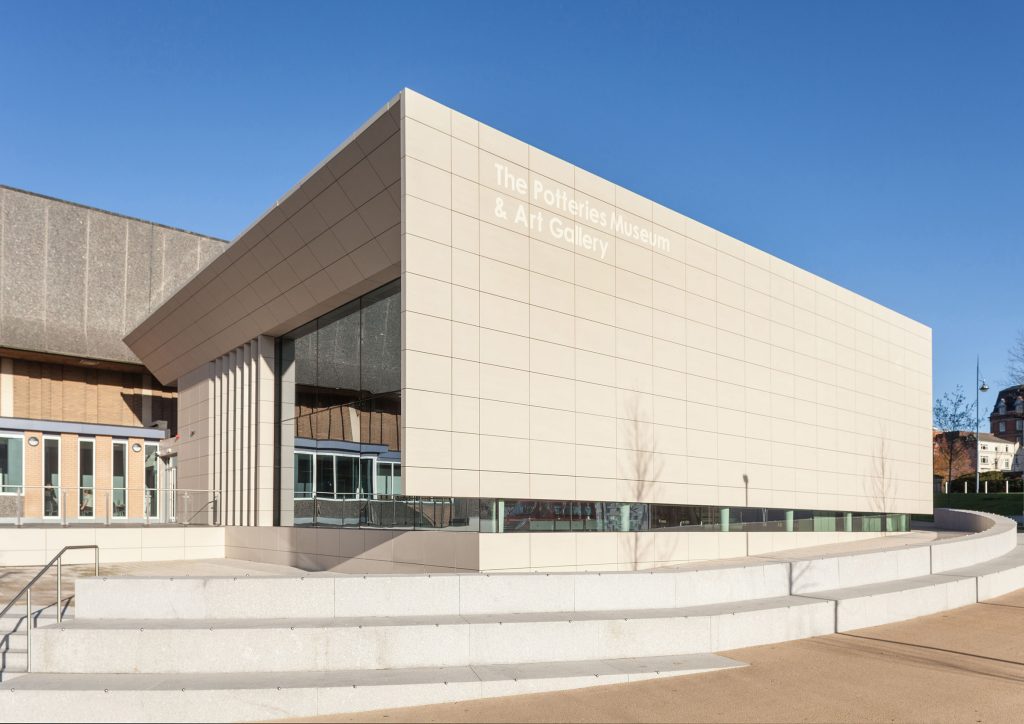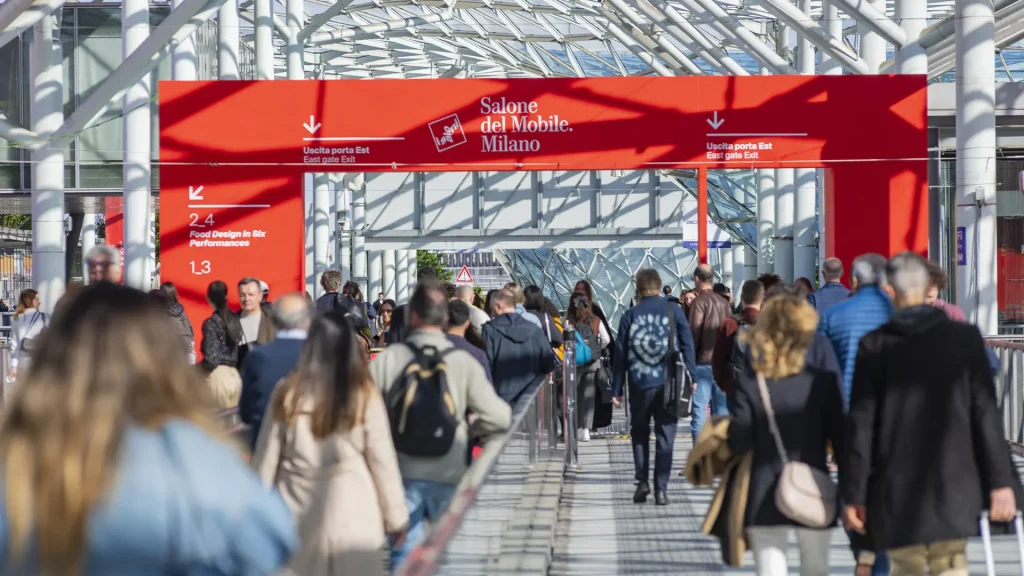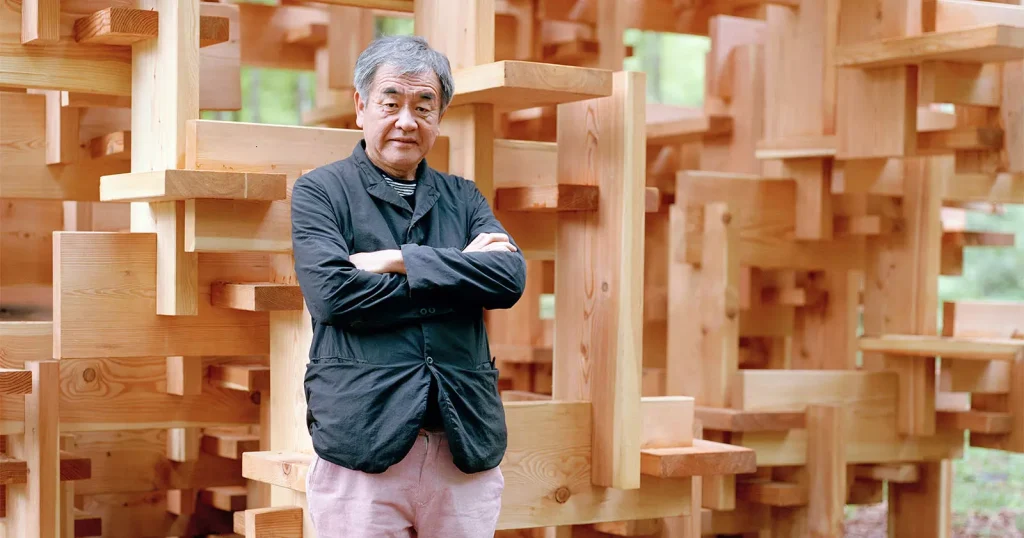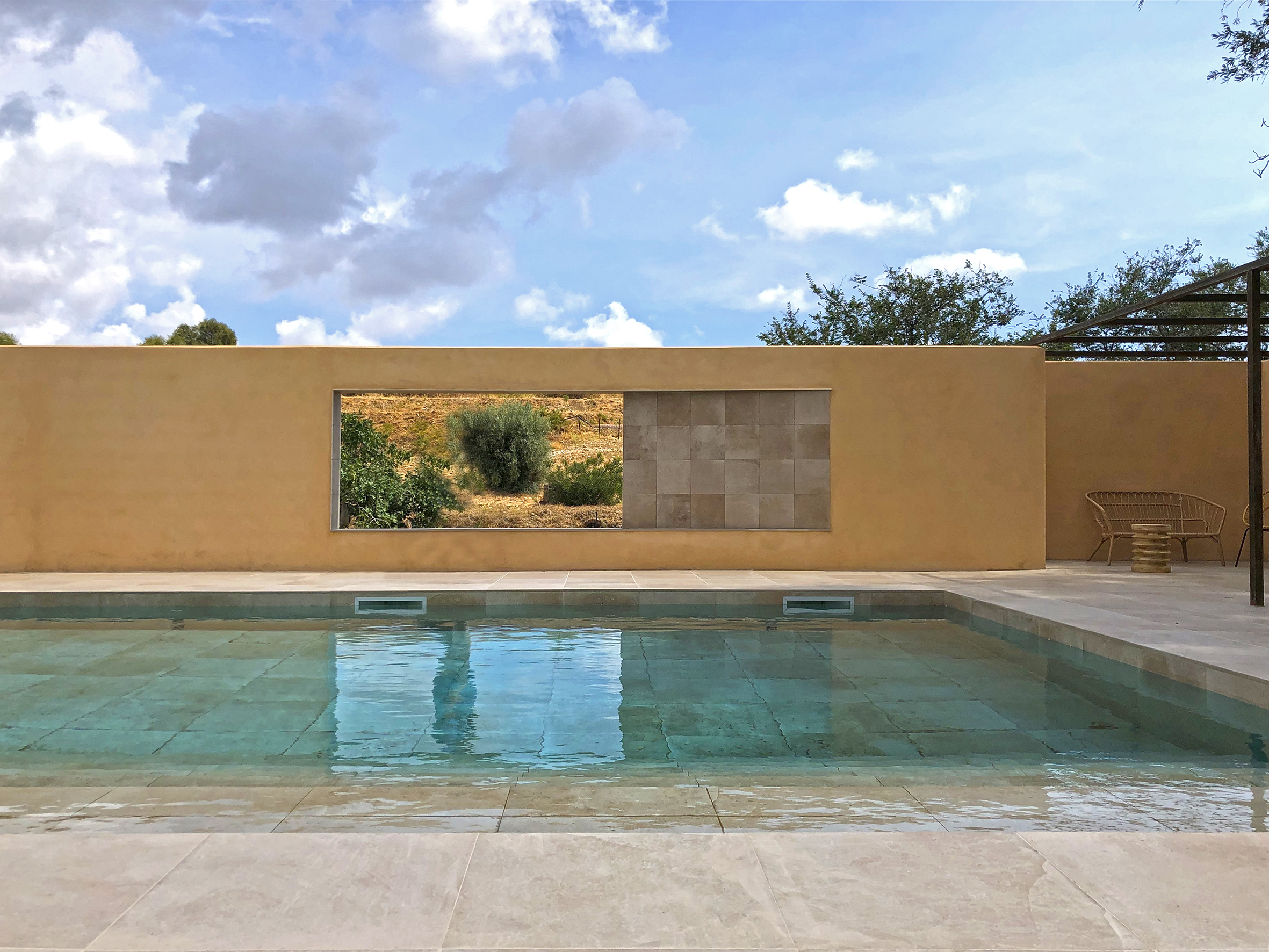
Grand Prix Casalgrande Padana XII: the winning projects 2019/2021
Twelve editions. Nearly 30 years of history. More than 1800 projects entered by 1300 designers from all over the world. The Casalgrande Padana Grand Prix is a permanent fixture on the international architectural scene, shining a light on how the company’s products are used and showcasing the technical properties and attributes of the individual collections, as well as illustrating the limitless expressive potential of porcelain stoneware products, some custom-made to the requirements of the designers.
Devised and enthusiastically supported by Casalgrande Padana, the Grand Prix is a competition designed to identify
the most significant works in the architectural world that skilfully combine technical properties with creative application, making the company’s porcelain stoneware tiles an essential element of their design. It’s about showcasing projects where these products are a vital part of the design process and not simply a covering material that could be replaced by another.
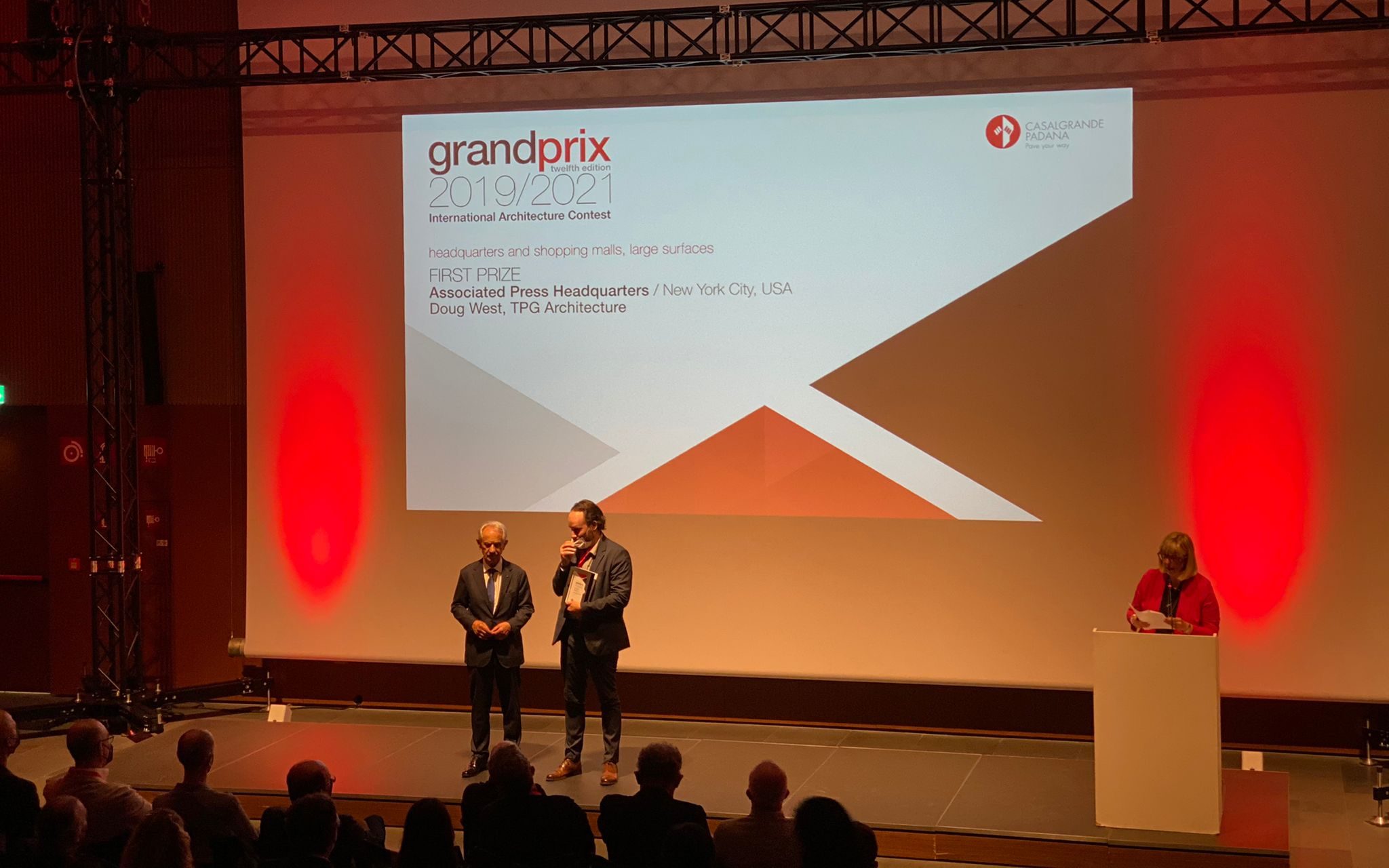
THE PANEL AND THE AWARDS
The quality of the works entered for the various editions of the Casalgrande Padana Grand Prix has always been
reflected by the prestige of the locations chosen for the award ceremonies that crown the winners in the four competition categories:
- Headquarters and shopping malls,
large surfaces - Public, service and industrial construction
- Residential buildings
- Façade cladding and outside flooring, with the addition of the complementary Swimming Pool section
For the last edition of the competition, considering works completed between 2019 and 2021, the panel was chaired by Casalgrande Padana President Franco Manfredini, and was made up of: Francesca Gugliotta (London); Malgorzata Szczepanska (Warsaw); Benoit Joly (Paris); Flavio Mangione (Rome); Sebastian Redecke (Berlin); Matteo Vercelloni (Milan). The award ceremony, with the announcement of the winners, was held on May 27 at MUDEC, Museum of Cultures in Milan.
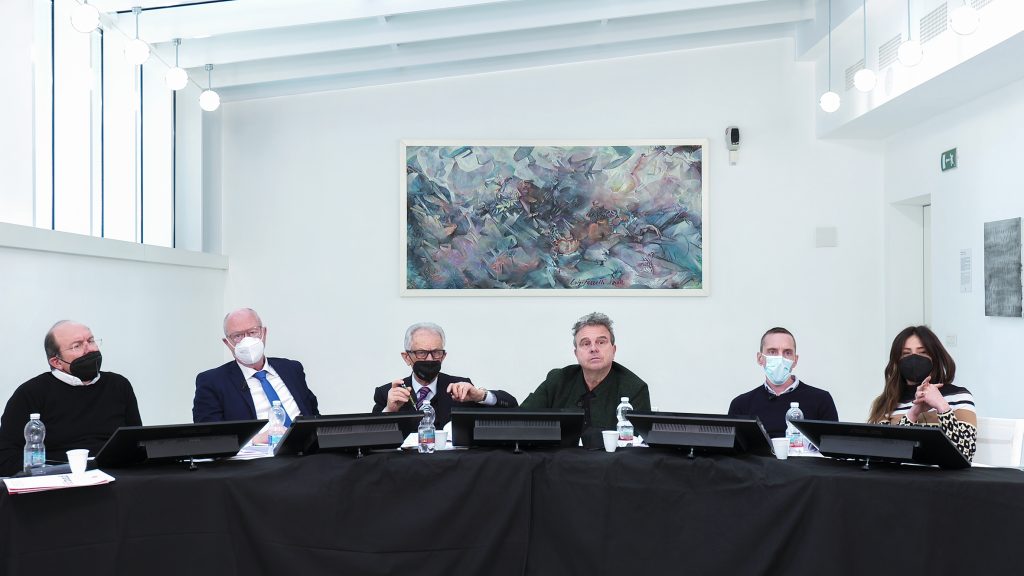
THE WINNING PROJECTS
Headquarters and shopping malls, large surfaces
FIRST PRIZE
Associated Press Headquarters New York City, USA. TPG Architecture
The black and white tones used for the ceramic coverings of the interiors highlight spaces and pathways that make up a linear, attentive, carefully calibrated design philosophy that engages closely with the architecture of the building occupied by the workspace. The contrast struck by the black and white tells the story of the settings, shaping a direct interaction with the colours of the newsprint and illustrating the daily efforts of the journalists whose job it is to transmit information.

SECOND PRIZE
Experimenta Science Centre Heilbronn, Germany. Sauerbruch Hutton
The hexagonal shape and the grey tones of the tiles used for the flooring of the entrance level engage directly with the
sophisticated dynamics of the architectural model as a whole. The indoor and outdoor areas complement one another
perfectly, with the geometric pattern of the floor highlighting the flawless execution of the design and elevating the work to an artistic dimension.
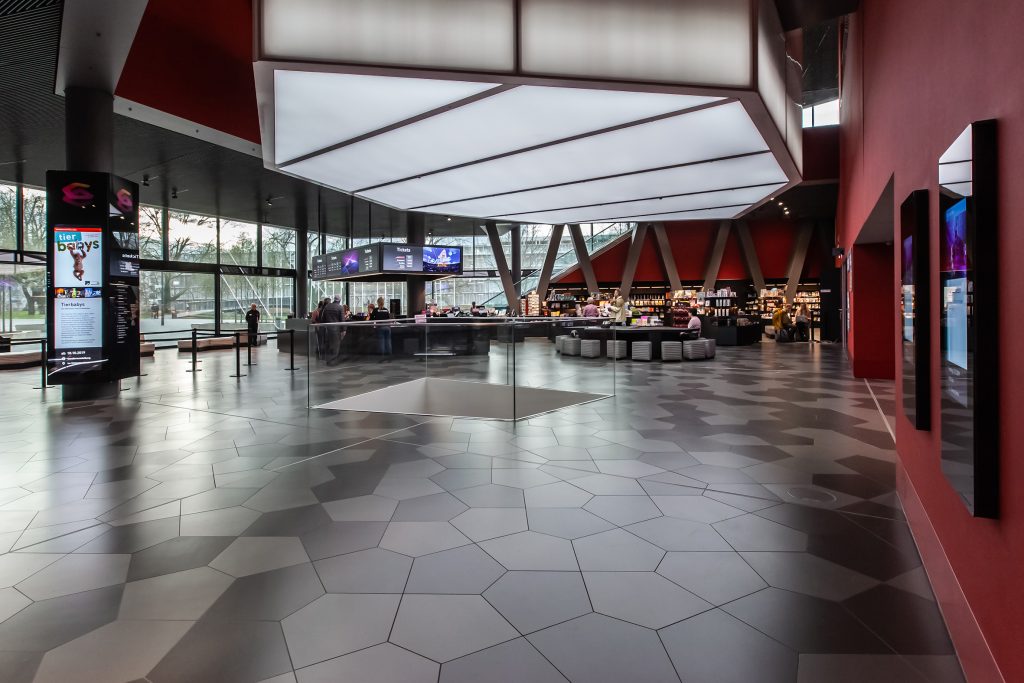
THIRD PRIZE
Angelini Headquarters Rome, Italy. Studio Transit
The volumetric complexity of the building is enhanced and accurately followed by the ceramic coverings, which adapt
perfectly to the shapes and lines of the composition, in a smooth geometric flow highlighted by the pale tones of the
tiles, which engage beautifully with the setting, shaping an on-going dialogue with visitors.
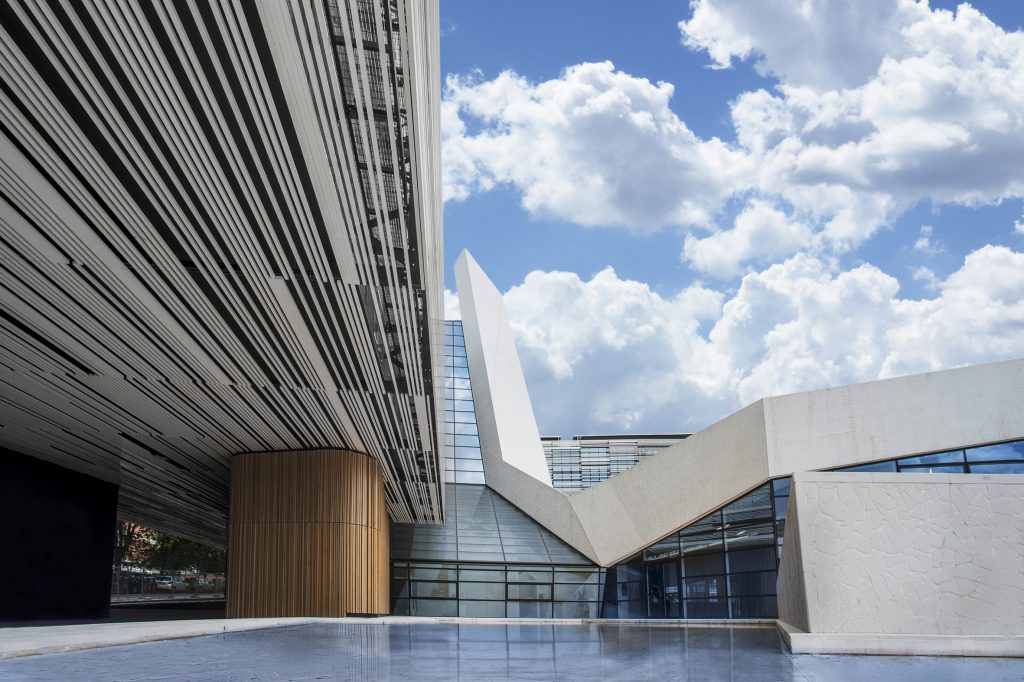
Public, service and industrial construction
FIRST PRIZE
Szent Gellèrt school Budapest, Hungary. Csilla Kutlik, Árkád-Terv
Part of a project for the renovation of a historical building, the new flooring, composed of pastel-coloured tiles, emerges from the white and neutral background of the interiors to take on a key role. The new take on the laying design dictated by the attention paid to the original pattern teams with the contemporary approach to slot seamlessly and attractively into a construction from the past.
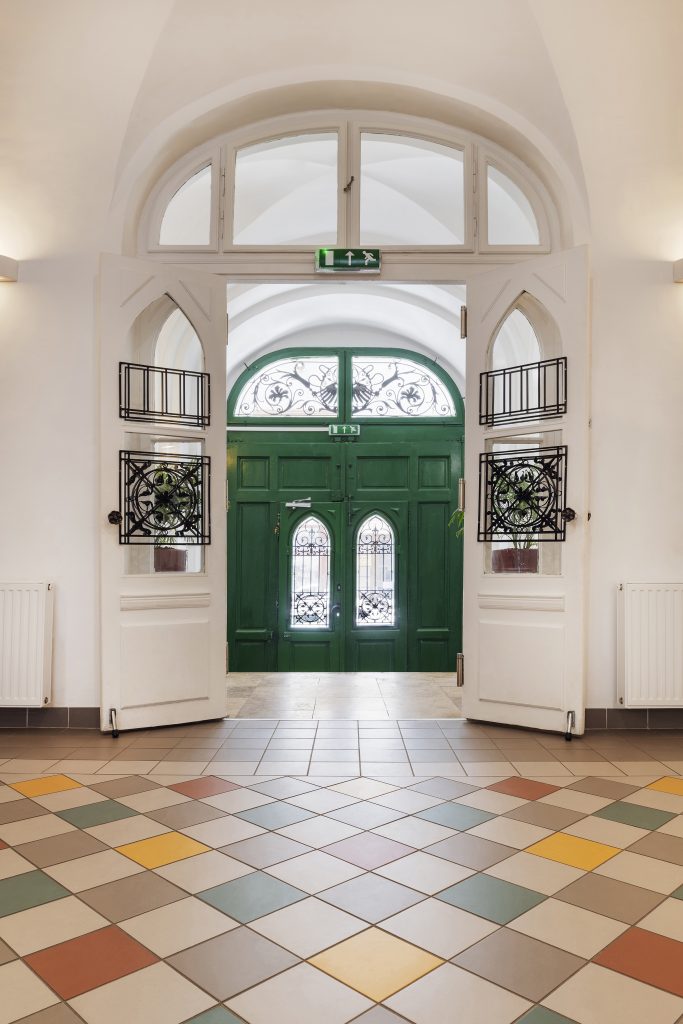
© Bálint Jaksa Photography 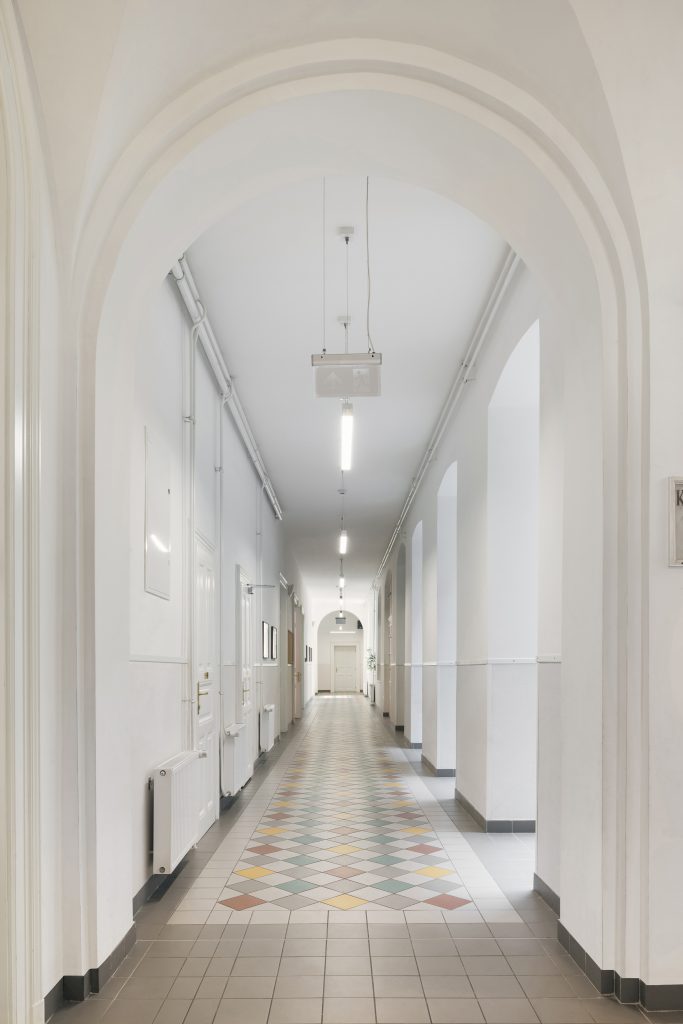
© Bálint Jaksa Photography
SECOND PRIZE
Buza gelato gallery Tel Aviv, Israel. Simon Barazin, Jonathan Canetti
The use of ceramic material for all the surfaces in the building shapes an enveloping, precise architectural shell, in which a smooth, soft green combines with the choice of the same material for all the coverings to create a sensation of
tranquillity, with an almost abstract dimension, blending in with the city landscape. The ceramic material extends beyond the structural and decorative dimension, taking on a three-dimensional role that becomes a founding architectural element.
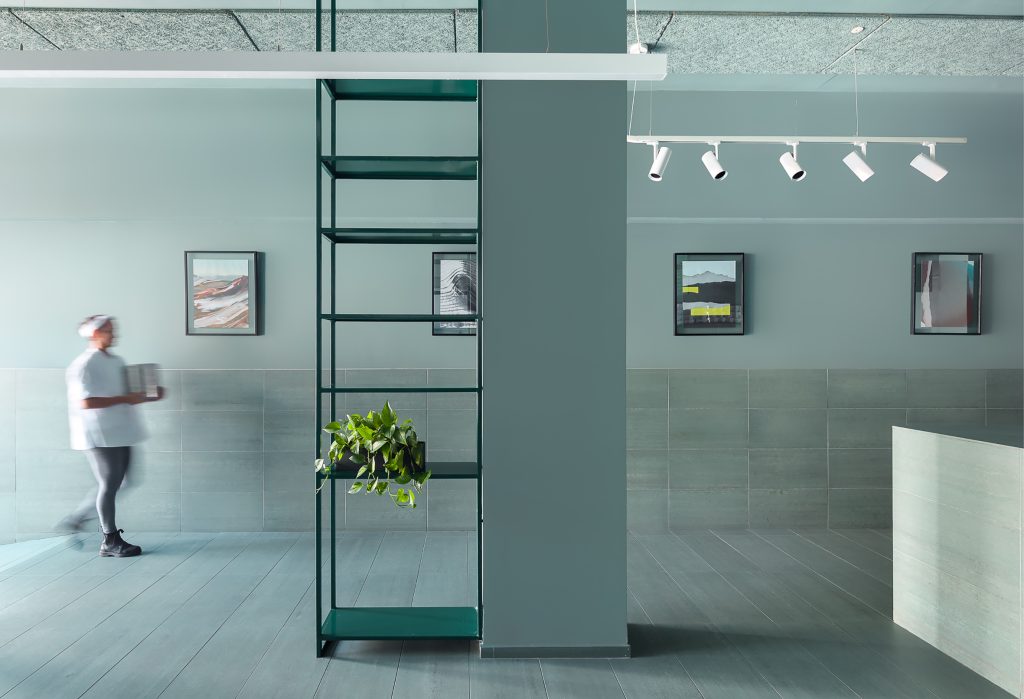
THIRD PRIZE
The Aga Khan University Karachi, Pakistan. Princess Zahra Pavilion, Aga Khan University
The ceramic flooring of the hospital, with its light, bright surfaces, offers a novel take on the textile and symbolic
tradition of the Persian rug, transferring it onto the floor tiles. The decorative patterns and coloured borders printed on
some of the surfaces used add emotional value to the technical performance and hygienic qualities of the material,
bringing a welcome homely sensation to the setting.
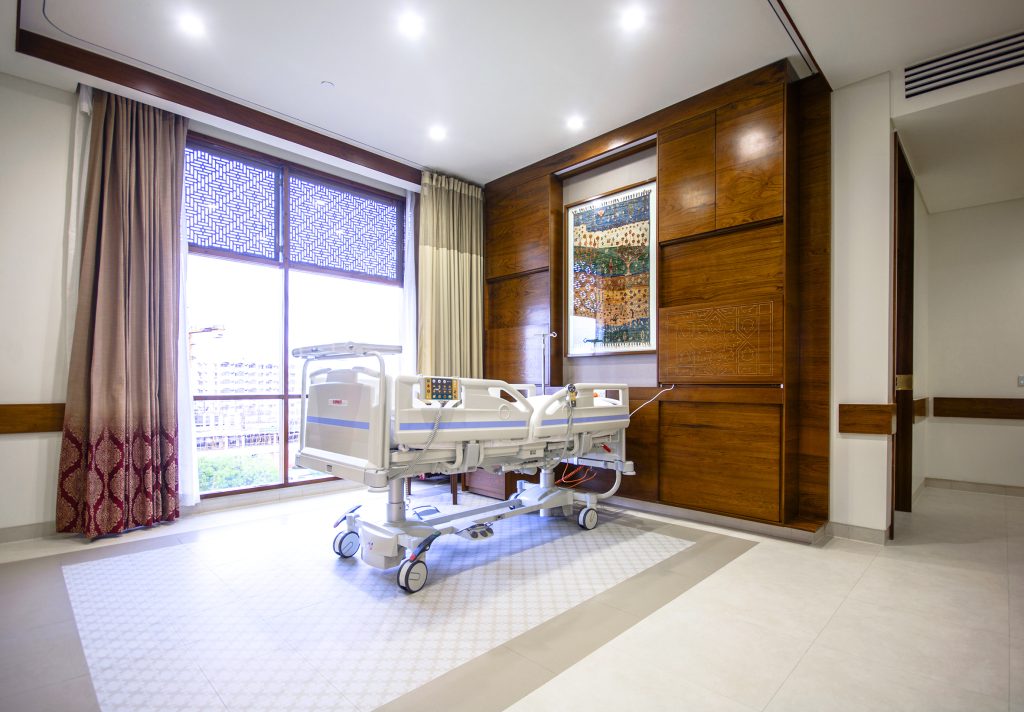
Residential buildings
FIRST PRIZE
Una piscina nel paesaggio Catania, Italy. Augusto Ortoleva, Giuseppe Motta, Studio Cantone-Ortoleva
The use of an earthy shade for the ceramic coverings extends from the paving of the courtyard to the inside of the
swimming pool, establishing a single material shade for different levels. A new interpretation of the lessons taught by
the landscape architect Luis Barragan defines the ochre shade of the perimeter walls that form a closed architectural
space reminiscent of the courtyards of buildings in Catania.
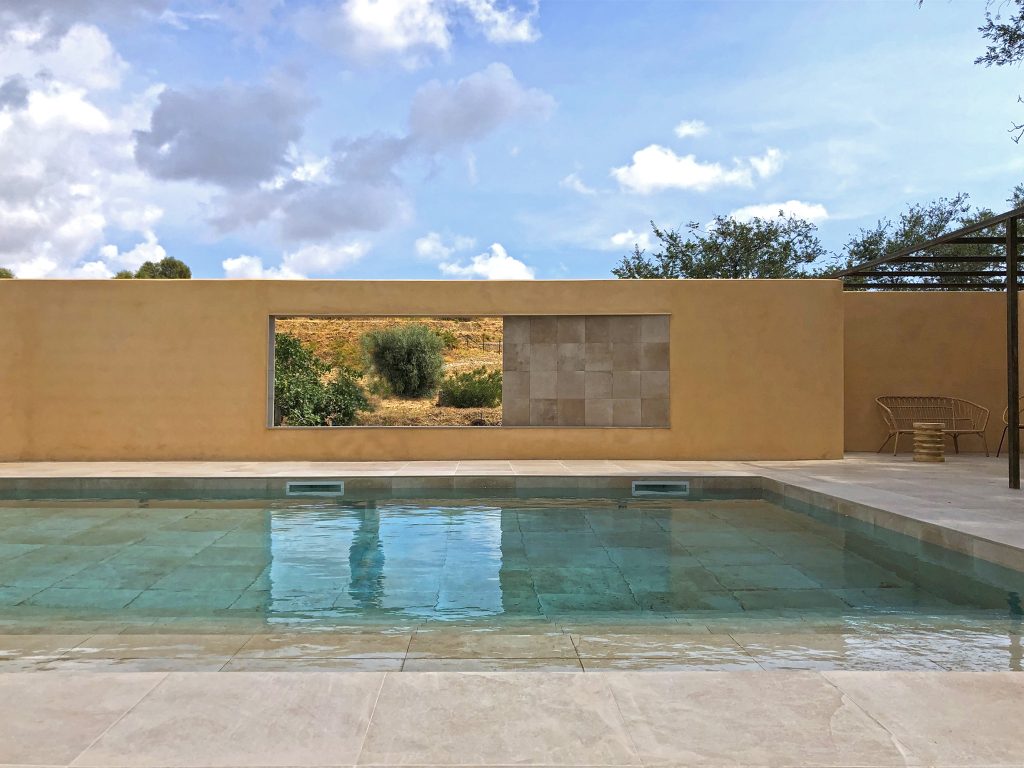
FIRST PRIZE
Riqualificazione del piano libero del Corviale: il Chilometro Verde Rome, Italy. Guendalina Salimei, T Studio
The first step in a major project for the redevelopment of the Corviale housing complex by Mario Fiorentino: a controversial, kilometre-long social architecture development that is part of the history of post-WWII European architecture. The current situation of the Corviale development – the re-use and re-invention of an imposing urban construction – adopts the dark flooring of the suspended road, now turned into a beam of green, as the departure point for a project that will be developed over time.
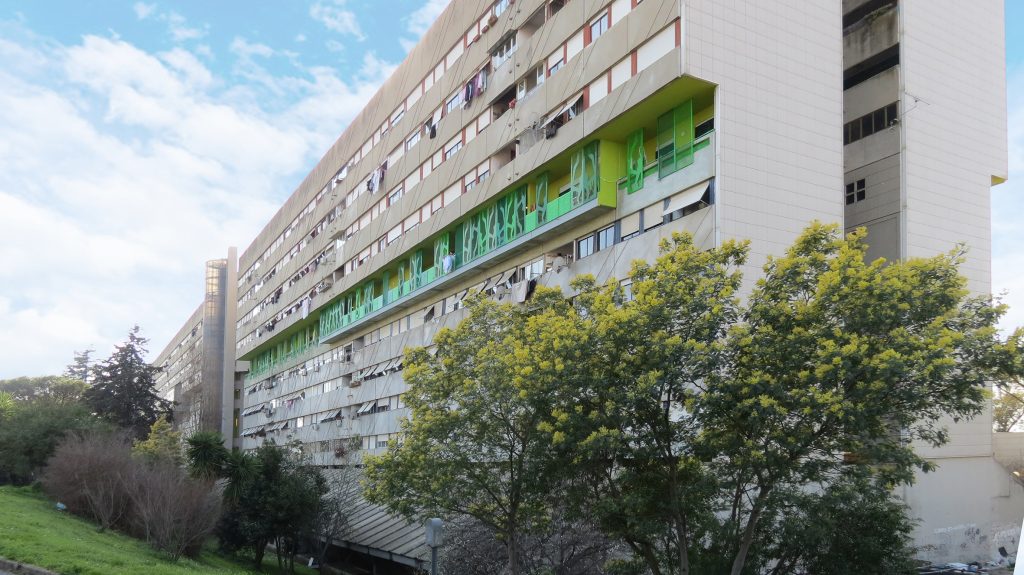
SECOND PRIZE
Bruzzesi 7 studios Milan, Italy. Christian Bianco, CBArchitects
The use of different-coloured ceramic materials as a covering for the walls and floors gives a precise identity to the various hospitality facilities designed to meet the new demands of urban tourism. The definition of the colours never appears ordinary, with the ceramics providing an element able to immediately distinguish the various temporary living spaces.
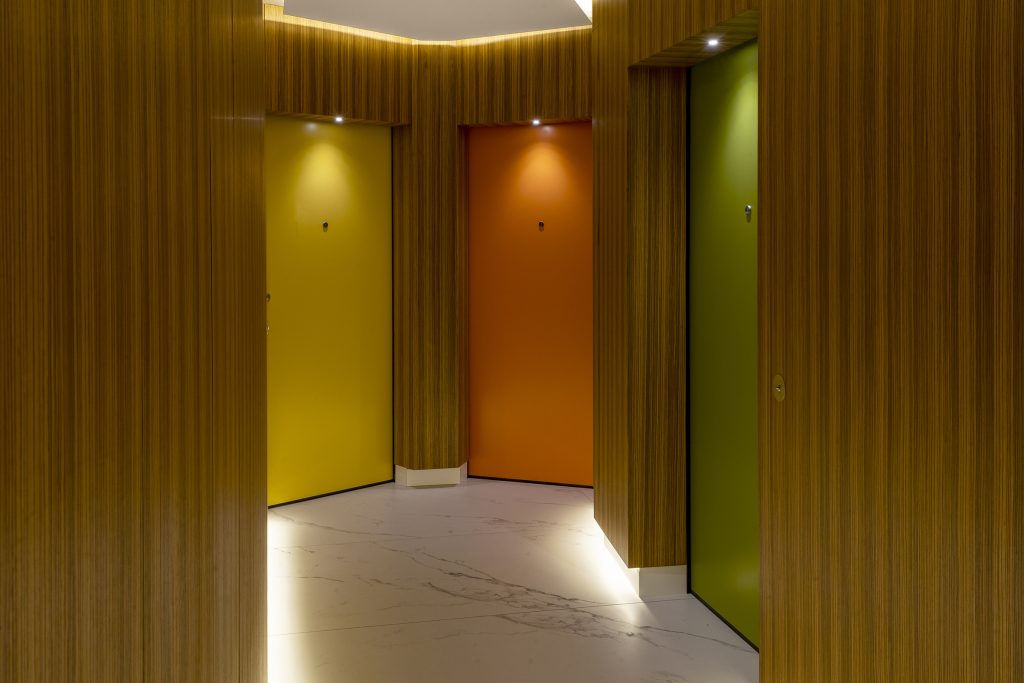
THIRD PRIZE
Private Apartment Prague, Czech Republic. Barbora Léblová, Barbora Léblová Interiors & Architecture
The use of ceramic tiles from floor to ceiling in the bathroom emphasises the rigour of the setting; the pale tones chosen team with the striking material quality of the Travertine surface to give the ceramics a key role in the setting, composed of absolute lines that come together to create a perfect volume.
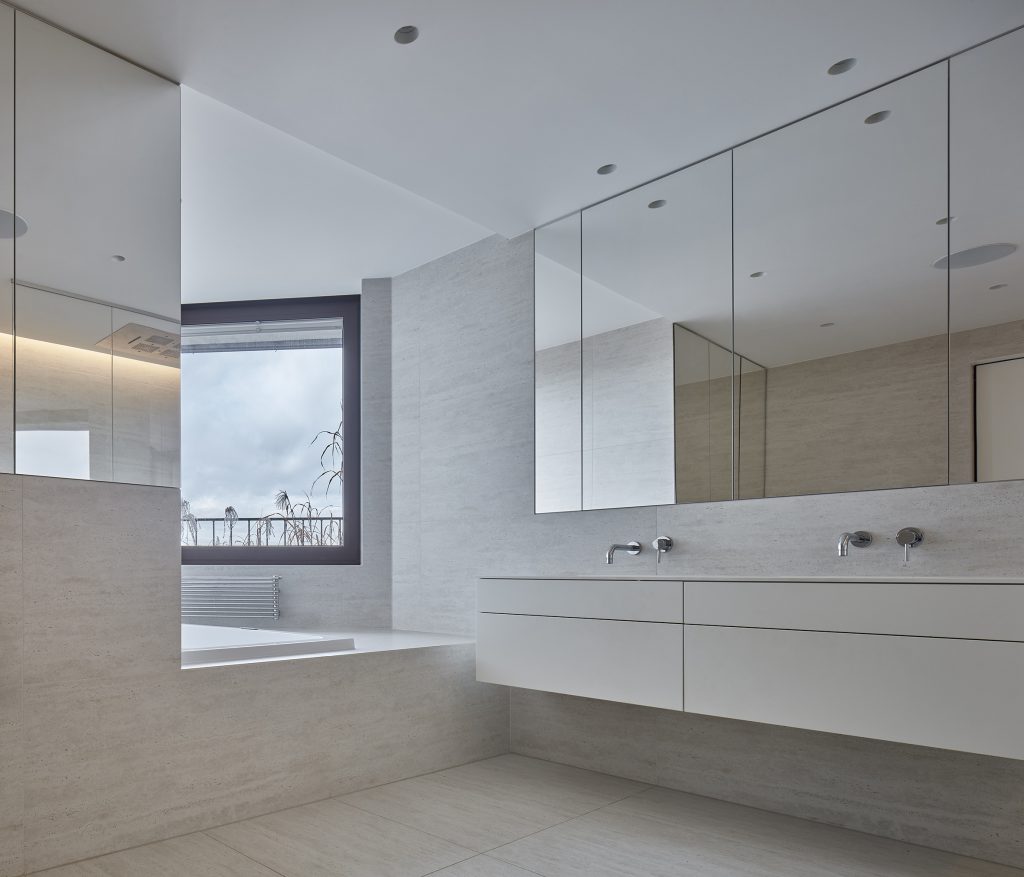
Façade cladding, outside flooring, swimming pools
FIRST PRIZE
Urbagreen Romainville, France
8ème Art Marseilles, France
Complesso Turistico plurifunzionale La Ciotat, France
Living in the Blue Lambrate Italy
Sangiovanni Housing Milan, Italy
Alfonso Femia, Atelier(s) Alfonso Femia
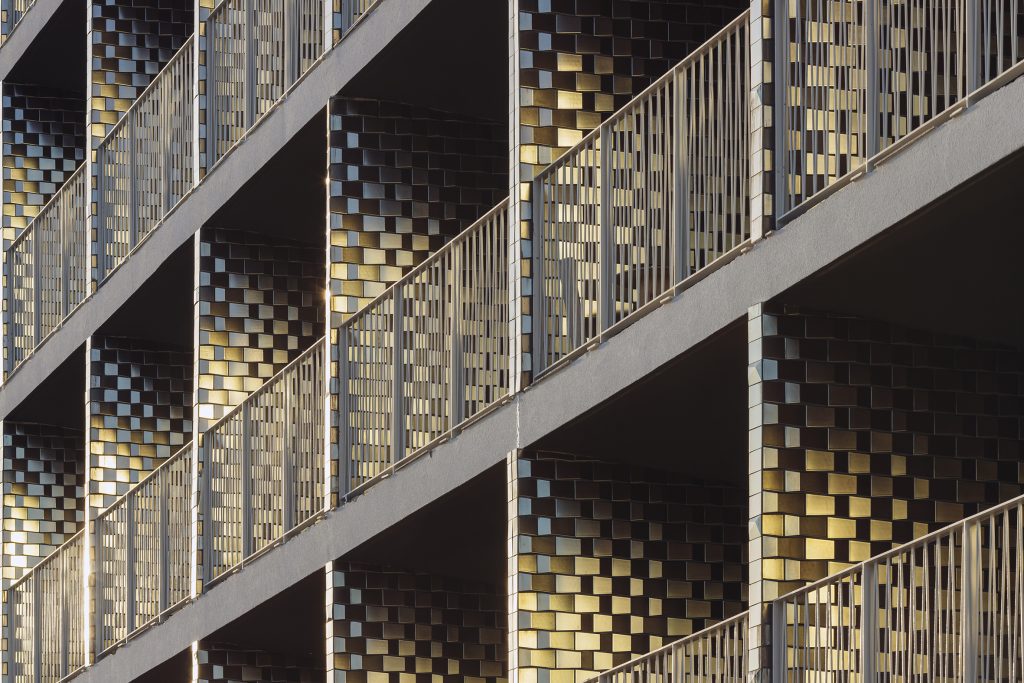
SECOND PRIZE
Centre Aquatique Aqua N&S Flixecourt, France. Philippe Deprick, Atelier d’Architectures Le 212
The ceramic coverings are called upon to highlight the regular lines of the architectural structure and the spaces and routes inside it. The different shapes and sizes used create an appealingly varied look, shaping a complex setting brilliantly coordinated with the architectural structure.
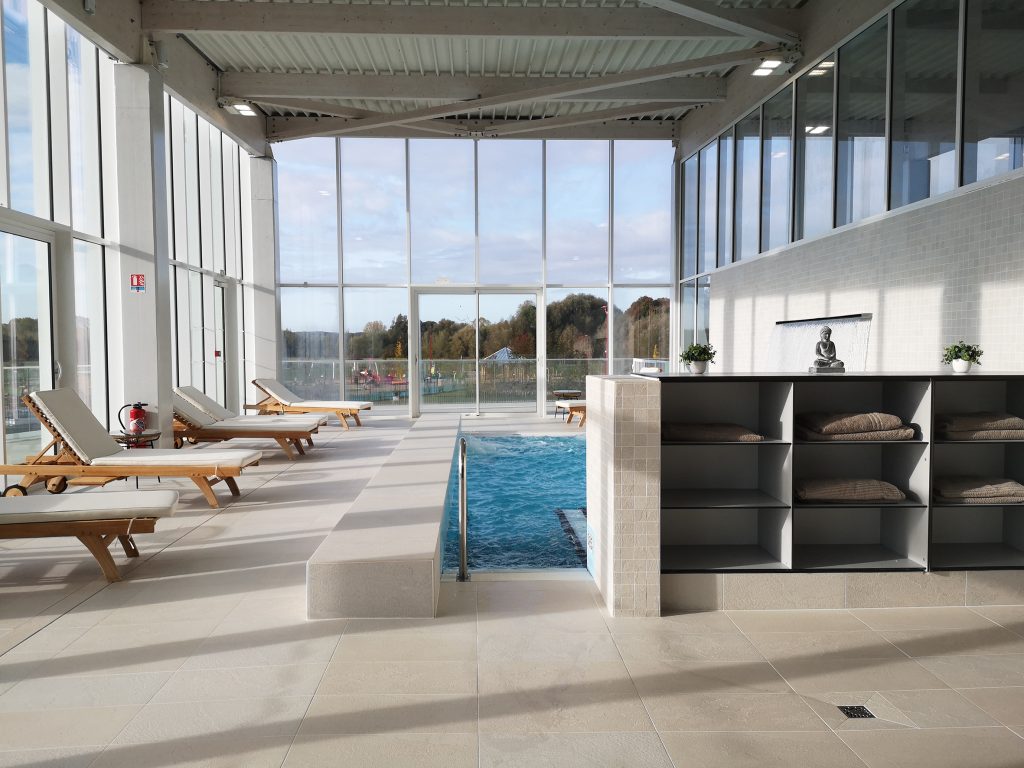
THIRD PRIZE
The Spitfire Gallery, Potteries Museum and Art Gallery Stoke-on-Trent, United Kingdom. Glancy Nicholls Architects
Ceramic tiles used to create a “total covering” effect. Ceramic coverings in a single colour are used to create a rigorous,
monolithic geometric shell, featuring simple yet exquisitely executed shapes. The creation of a single shell composed
of sloping continuous surfaces and vertical panels required careful study to conceal all the technical solutions adopted.
